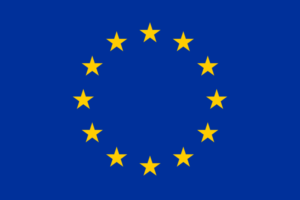
Social Indicators of Trust in an Age of Informational Chaos
How do we decide which experts to trust in digital and physical environments of too much information including false or misleading information? This central question of the PERITIA project is the focal point of a recently published Special Issue in the scientific journal Social Epistemology (A Journal of Knowledge, Culture and Policy). Edited by PERITIA investigators T.Y. Branch and Gloria Origgi, it examines how cues in our social environment, so called social indicators, inform decisions about who to trust.
We are excited to announce the arrival of a new special issue of Social Epistemology: Social Indicators of Trust. pic.twitter.com/Rr90u0hg8t
— Social Epistemology (@SocEpistemology) September 9, 2022
Drawing on a PERITIA workshop in October 2020, the Special Issue features various articles from PERITIA experts as well as other renown trust researchers across the world. From different (inter-)disciplinary perspectives, ranging from history, science, philosophy of science, science and technology studies, science communication, to social epistemology, the articles describe how people use social indicators of trust, what types of indicators there are, and how they work in society. By studying people’s attitudes, values, and experiences, this issue raises questions about the high expectations generally put on lay publics to trust experts, and thereby challenges normative views about the relationship between science and lay publics, or experts and non-experts. It also examines the structure, role and methods of institutions for social indicators of trust, as well as how social indicators operate in times of crises.
Watch our explainer video that summarizes what social indicators of trust are: cues in our social environment that we use to inform decisions about who to trust.
T.Y. Branch and Gloria Origgi write in their introduction (“Social Indicators of Trust in the Age of Informational Chaos”) that honesty about conflicts of interest of experts is a well known way for people to decide whom to trust. Not always, however, are social indicators that clear and accessible. How do lay publics decide which experts to trust when they lack the competence to evaluate the information provided? What additional information is available and how do they use it to assess expertise?
“(M)any other epistemic cues, like the evidence supporting information from experts, are inaccessible to lay publics. Therefore, lay publics simultaneously use second-order social cues in their environment to inform decisions to trust. These second-order social cues … prevent lay publics from having to trust blindly.” (T.Y. Branch & Gloria Origgi)
Social indicators of trust are used consciously or unconsciously to evaluate an expert’s trustworthiness. Examples for such social indicators of trust can be the position of experts in society, the confidence they show as a speaker, or their influence.
Below we highlight the articles written by investigators of the PERITIA team:
- When it comes to trusting experts, non-experts or lay people don’t focus only on expertise, rather, they collect information from their environment to create a social image of the expert, writes Gloria Origgi in “The Social Indicators of the Reputation of an Expert“.
- T.Y. Branch reflects on how scientific experts have benefited from distinguishing norms like the value-free ideal for science which help them maintain their relatively trusted position in society.
- In “Science Advice in an Environment of Trust: Trusted, but Not Trustworthy?“, Torbjørn Gundersen & Cathrine Holst argue that the design of institutions and their broader institutional environment matter more often than recognized for trustworthiness.
- Carlo Martini et al call for a special training for knowledge brokers from institutions and a push for citizens to enhance their media literacy in “Knowledge Brokers in Crisis: Public Communication of Science During the COVID-19 Pandemic“.
Almost all articles in this Special Issue are available open access on the publisher’s website.



